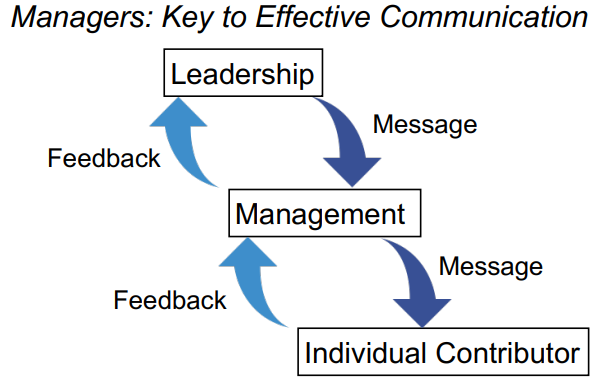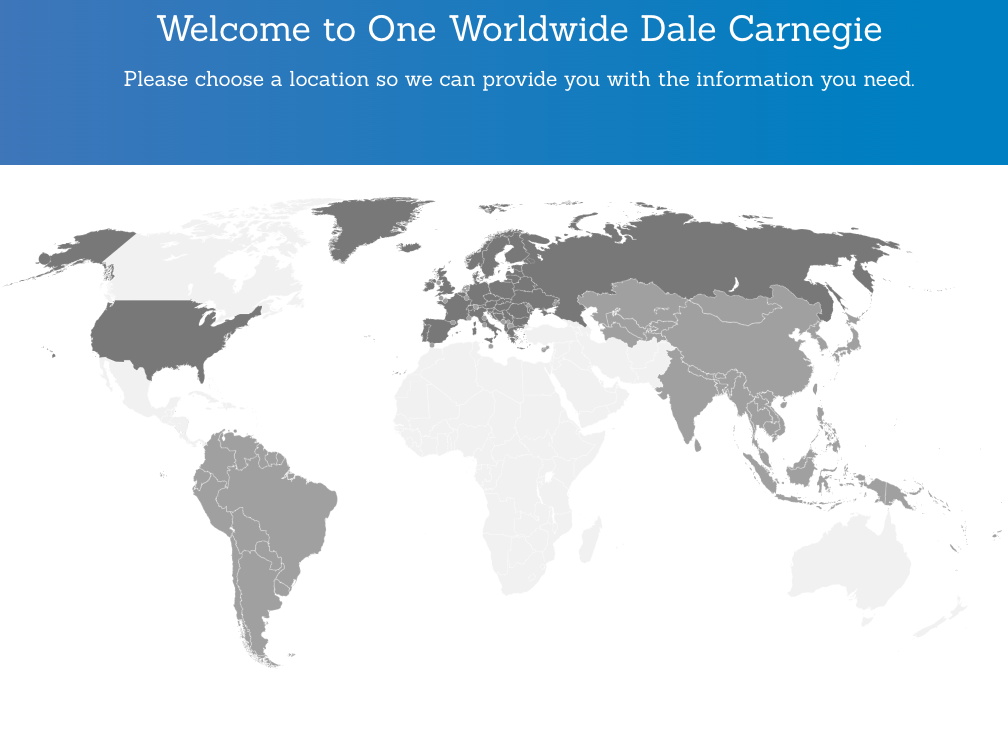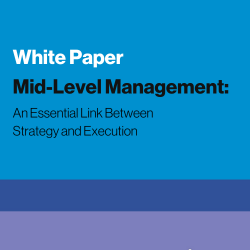Mid-Level Management: Essential Link Between Strategy & Execution
Unlock the potential of your organization’s “middle layer” to drive strategy into results.
Why mid-level managers are pivotal—and what happens when the link between strategy and execution is weak.
Even when leadership communicates strategic goals clearly, day-to-day execution can fall short. Mid-level managers sit at the intersection of strategy and action, translating high-level objectives into concrete steps for their teams. If they lack clarity, support, or leadership skills, initiatives can stall, teams may disengage, and results can suffer.
This white paper draws on research and organizational insights to explore the role of mid-level managers, the challenges they face, and practical steps organizations can take to strengthen this critical link.

Execution breaks down when managers lack support and guidance.
Many organizations underestimate the complexity of mid-level management. Managers are expected to oversee operations, lead teams, and communicate strategy effectively—all at once. Without the right tools and guidance, priorities can become unclear, team morale can drop, and execution can falter.
-
Confidence in Execution: Leadership 70%, Mid-Managers 45%, Teams 28%
-
Clarity of Goals: Leadership 73%, Mid-Managers 50%, Teams 31%
-
Empowerment to Make Decisions: Leadership 67%, Mid-Managers 40%, Teams 23%
These figures show that perceptions and capabilities vary widely across roles. Strengthening mid-level management ensures that strategic intentions reach the teams responsible for delivering them.

Engagement and retention suffer when managers cannot connect strategy to action.
When mid-level managers struggle to translate strategy or support their teams, engagement declines and turnover risk rises. Employees want to understand how their work fits into the bigger picture and feel empowered to contribute.
-
High Engagement Levels: Leadership 58%, Mid-Managers 35%, Teams 20%
-
Top Factors Driving Turnover: Lack of clear direction (52%), insufficient manager support (49%), feeling undervalued (46%)
Retention and performance are closely tied to how well managers lead and connect strategy to action, not just pay or perks.

Bridging the gap in the middle layer improves alignment, engagement, and results.
Organizations can improve results by taking targeted actions at all levels. Supporting mid-level managers ensures that strategy is translated into action, teams feel empowered, and leadership has the clarity and alignment needed to drive results.
-
Teams: Show how everyday work contributes to strategic objectives to increase understanding and motivation.
-
Mid-Level Managers: Provide training, coaching, and tools to translate strategy into actionable plans while supporting and inspiring their teams.
-
Leadership: Clarify goals, model alignment, and ensure managers have the resources and authority to drive execution.
By focusing on the middle layer, organizations can bridge the gap between vision and reality, improving engagement, performance, and business outcomes.












